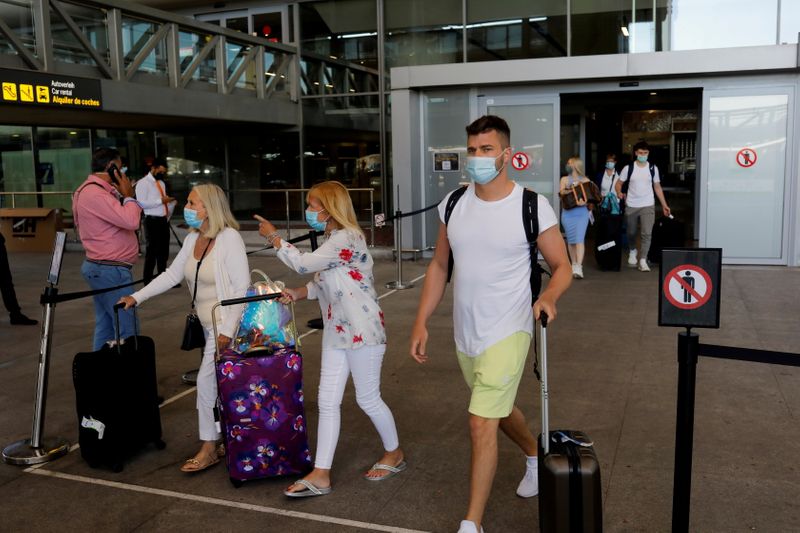By Nathan Allen and Belén Carreño
MADRID (Reuters) - Spain posted a record drop in jobless figures for the second month in a row in June, as looser COVID-19 restrictions, increased vaccination rates and the cautious return of tourism buoyed the labour market.
The number of people registering as jobless fell by 4.4% from May, leaving 3.61 million out of work, labour ministry data showed on Friday, marking the fourth consecutive monthly decline.
The social security ministry said Spain had created a net calendar-adjusted 203,000 jobs last month, thanks largely to robust growth in the services sector as the summer tourism season cranks into gear, drawing in Spanish holidaymakers and raising the size of the workforce to near pre-pandemic levels.
Still, regions dependent on foreign tourism like the Balearic and Canary Islands are lagging behind on job creation and are home to the majority of furloughed workers, Social Security Minister Jose Luis Escriva told a news conference.
However, most Spanish regions have already reached pre-pandemic employment levels, according to data from his department.
"The numbers surprised everyone," he said.
There were also 6.4% fewer jobless claims than in June 2020, when economic activity was still hamstrung by a strict lockdown to curb the first wave of coronavirus infections, the labour ministry said.
However, the number of jobless remained significantly above the 3.02 million of June 2019 before the pandemic struck.
Friday's solid data adds to recent positive economic signals from Spain, where growth in factory activity also reached a two-decade high last month.

After a 10.8% slump in 2020, the economy shrank a further 0.4% in the first quarter as COVID-19 restrictions slowed activity, but Prime Minister Pedro Sanchez said this week that output expanded a record 18% in the second quarter from a year ago.
A national state of emergency ended in May, and the country began letting in vaccinated visitors from anywhere in the world from June 7. The government expects foreign tourist arrivals to reach 45% of their pre-pandemic levels this summer.